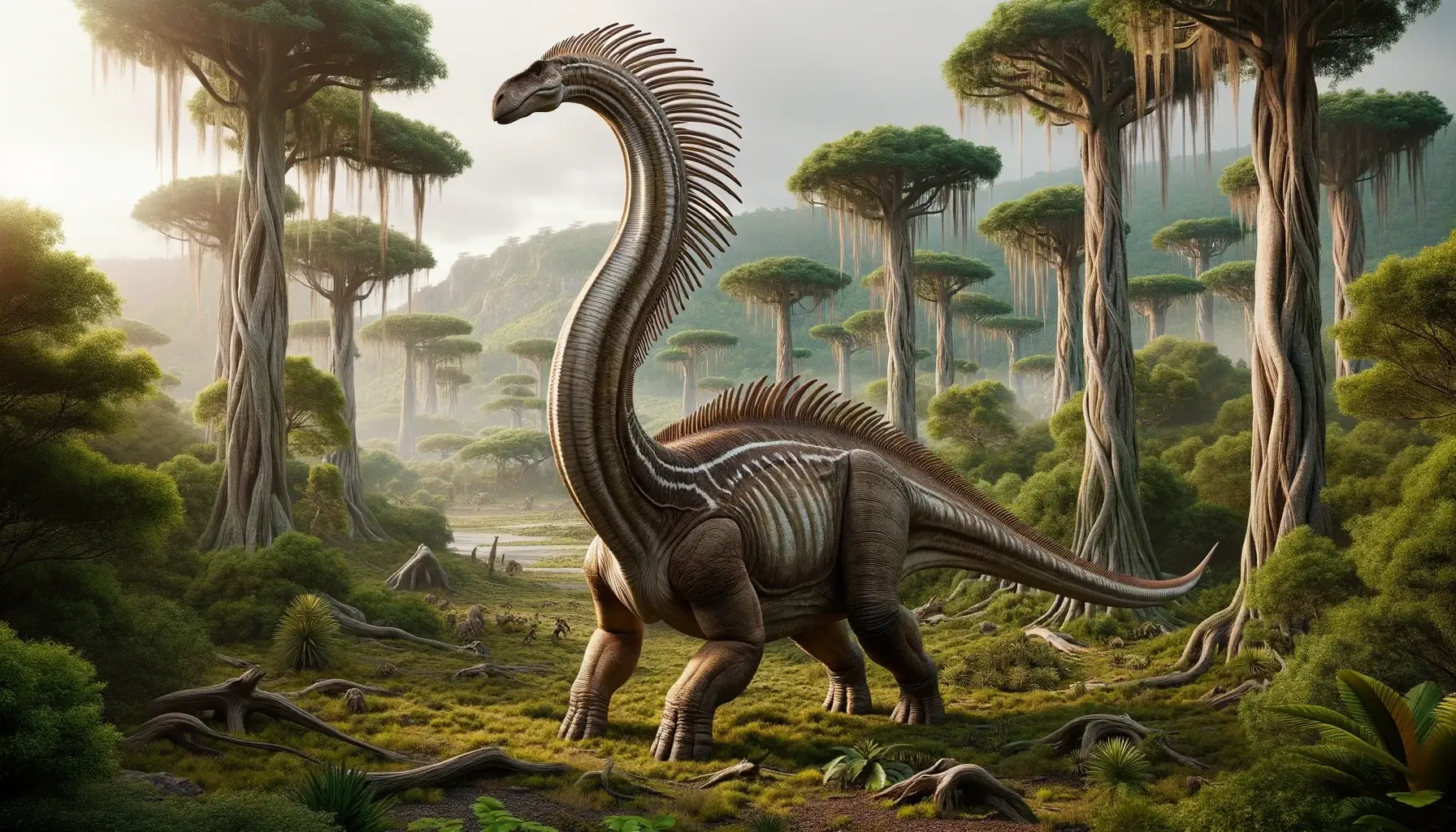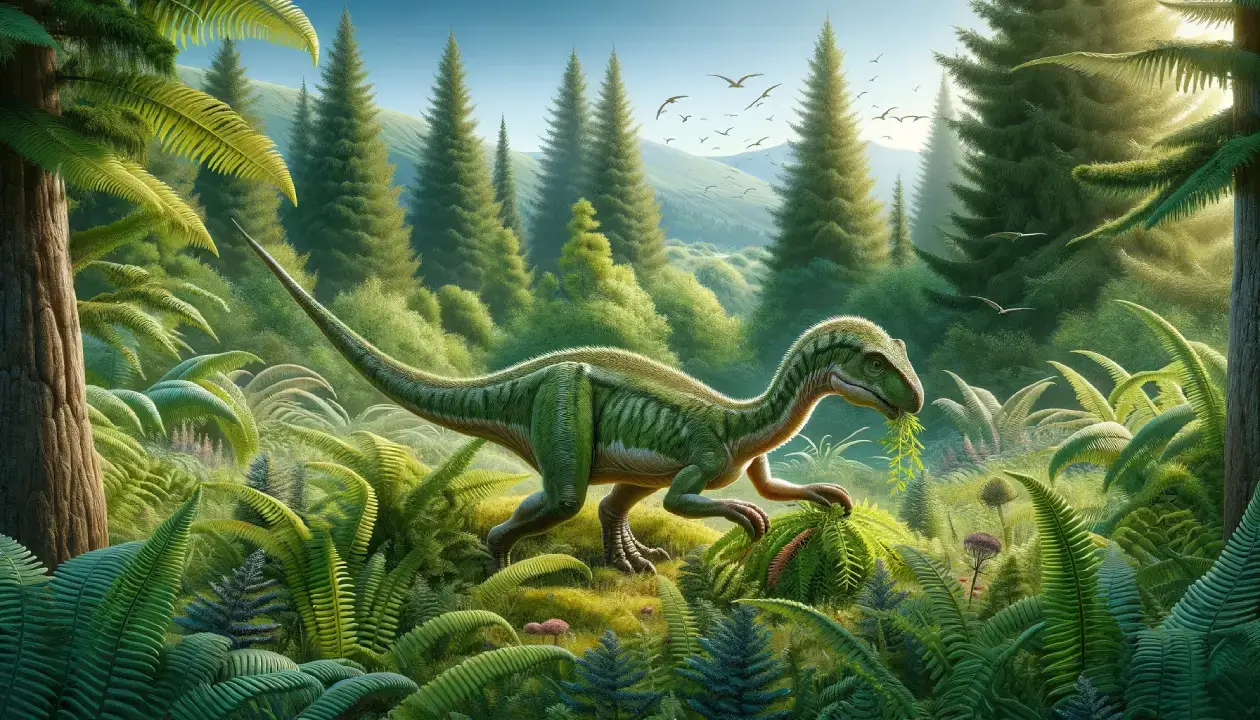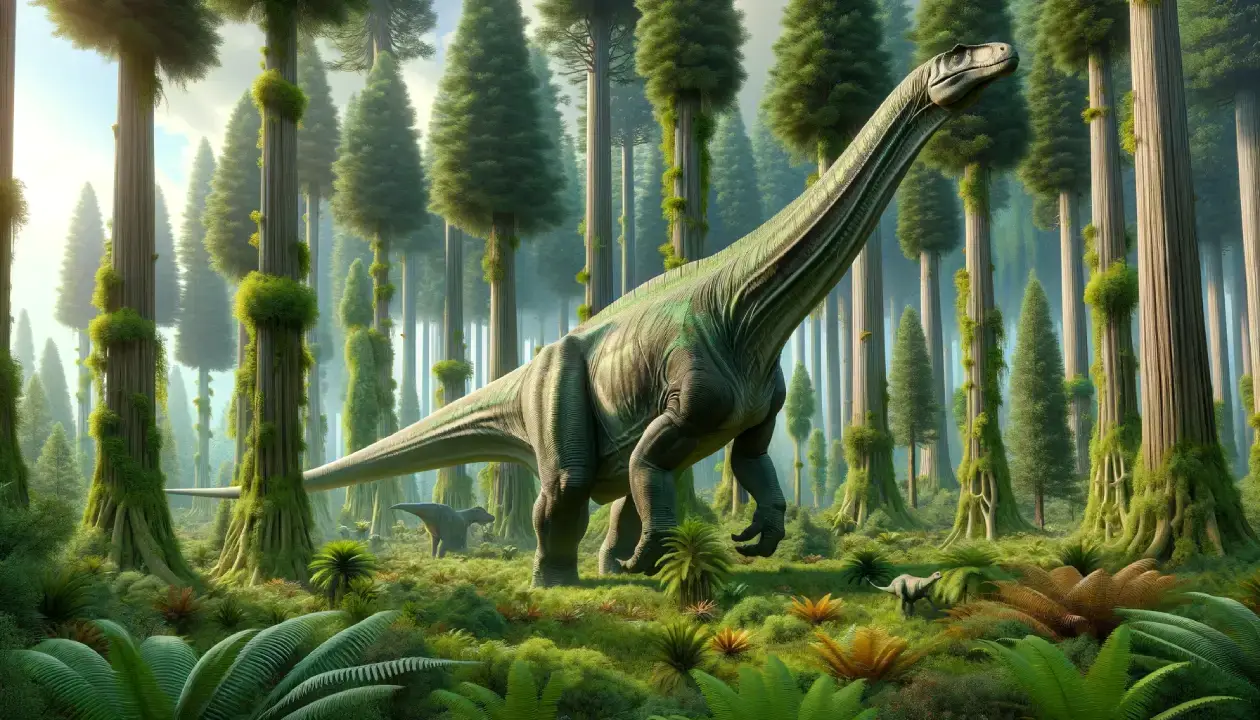Amargasaurus was a unique sauropod dinosaur that lived in what is now Argentina during the Early Cretaceous period, about 130 million years ago. It was one of the first dinosaurs to be discovered in the La Amarga Formation, and its name means “bitter lizard”. It had two parallel rows of tall spines on its neck and back, unlike any other known sauropod. These spines could have supported a skin sail or a keratinous sheath, and may have been used for display, defense, or thermoregulation.

Basic Information
| Feature | Details |
| Time Period | Early Cretaceous (130 million years ago) |
| Diet | Herbivore |
| Length | About 9 meters (30 feet) |
| Weight | About 2.7 metric tons (3 tons) |
| Size | Medium |
| Posture | Quadrupedal |
| Locations | Argentina |
| Continent | South America |
| Type | Sauropod |
| Habitats | Woodlands |
Description of Amargasaurus
Historical Context
Amargasaurus was first discovered in 1984 by a team of paleontologists led by José Bonaparte, who also found the remains of Carnotaurus, a horned carnivore that lived 50 million years later. The fossils of Amargasaurus were found in the La Amarga Formation, a rock outcrop in the Neuquén Basin of Argentina, which gives the dinosaur its name. Amargasaurus was described and named in 1991 by Bonaparte and Jaime Powell. Only one specimen of Amargasaurus is known, which includes part of the skull, most of the neck and back, and some limb bones.
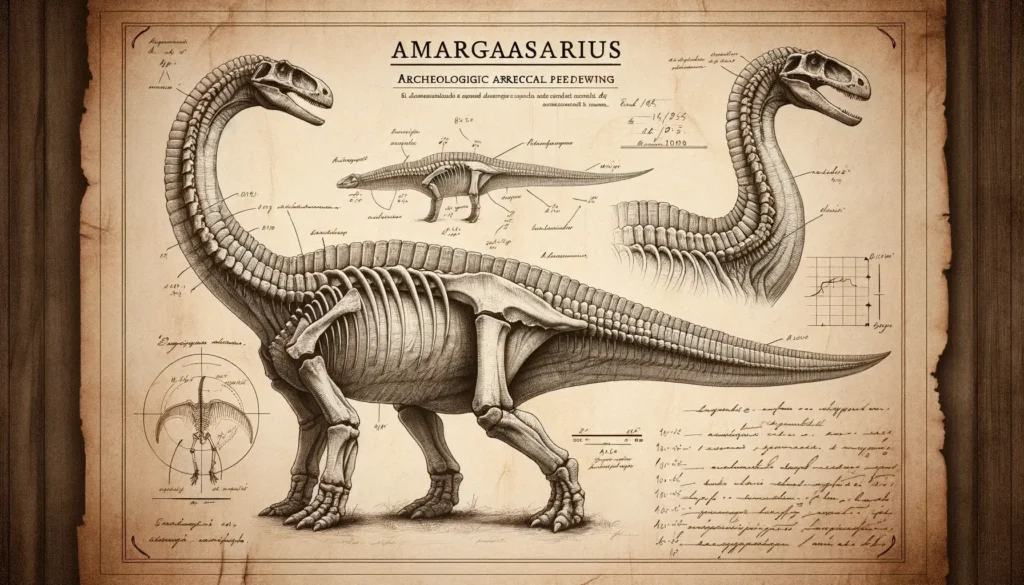
Physical Attributes
Amargasaurus was a medium-sized sauropod, a group of long-necked, plant-eating dinosaurs that includes some of the largest animals ever to walk on land. However, compared to other sauropods, Amargasaurus had a relatively short neck and tail. Its neck was about 2.4 meters (8 feet) long, and its tail was about 3.5 meters (11.5 feet) long. Its body was stout and compact, with four sturdy legs and a small head. Its teeth were spoon-shaped and adapted for cropping low-growing vegetation.
Feeding Habits
As a herbivore, Amargasaurus fed on plants, mainly ferns, cycads, conifers, and ginkgoes that grew in the woodlands of South America during the Early Cretaceous. Unlike some other sauropods that could reach high branches with their long necks, Amargasaurus probably browsed on plants that were closer to the ground. It may have used its strong neck muscles to pull down branches or strip leaves from stems. It is possible that Amargasaurus swallowed stones (gastroliths) to help grind up the plant material in its stomach.
Unique Features
The most distinctive feature of Amargasaurus was the row of sharp spines that lined its neck and back. These spines were extensions of the neural spines, which are bony projections on top of the vertebrae. The spines on Amargasaurus were unusually long and slender, reaching up to 60 centimeters (2 feet) in height. The spines were also curved backwards and slightly twisted. The function of these spines is still a matter of debate among scientists. Some possible explanations are:
- The spines supported a pair of sails that ran along the neck and back. These sails could have been used for thermoregulation (controlling body temperature), display (attracting mates or intimidating rivals), or communication (signaling mood or status).
- The spines were covered by horny sheaths that formed sharp spikes. These spikes could have been used for defense against predators or combat with other members of the same species.
- The spines were used for sound production by banging them together like a percussion instrument. This could have been a way of communicating over long distances or warning off predators.
Movement and Speed
Amargasaurus was a quadrupedal dinosaur, meaning it walked on all four legs. It had short but powerful limbs that supported its heavy body. Its front legs were slightly shorter than its hind legs, giving it a sloping posture. Its feet had five toes each, with claws on the first three toes. Amargasaurus was not a fast runner, but it could probably move at a moderate pace when needed. Its leg bones were more sturdy than those of today’s white rhinoceros, which can gallop at speeds of up to 50 kilometers per hour (31 miles per hour).
Cultural Impact
Amargasaurus is one of the most popular and recognizable sauropods among dinosaur enthusiasts, thanks to its unique spines and sails. It has appeared in several books, documentaries, video games, and toys that feature dinosaurs. Some examples are:
- The book The Complete Dinosaur (1997), edited by James O. Farlow and M.K. Brett-Surman, which includes a chapter on Amargasaurus by Jaime Powell.
- The documentary Walking with Dinosaurs (1999), produced by the BBC, which features Amargasaurus in the episode “”Giant of the Skies”” as a prey item for a giant pterosaur.
- The video game Jurassic World Evolution (2018), developed by Frontier Developments, which allows players to create and manage their own dinosaur park, including Amargasaurus.
- The toy line Jurassic World Dino Rivals (2019), produced by Mattel, which includes an Amargasaurus figure with movable neck and tail.
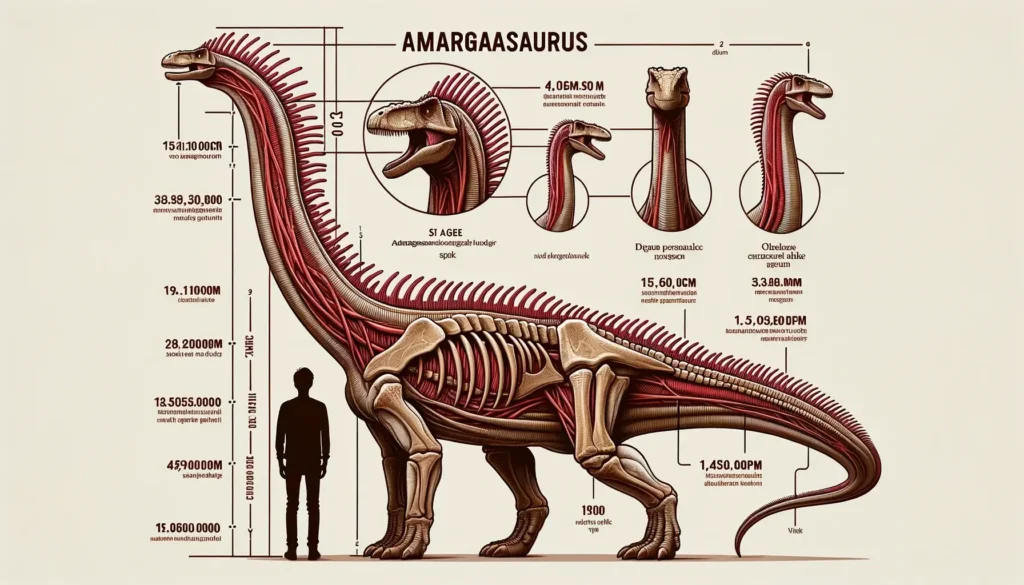
Interesting Facts
- Amargasaurus is related to some of the most famous dinosaurs, such as Diplodocus and Brontosaurus, which belong to the same group of sauropods called diplodocoids.
- Amargasaurus lived in a diverse and rich ecosystem that included other sauropods, such as Zapalasaurus and Amargatitanis, as well as theropods, such as Giganotosaurus and Skorpiovenator.
- Amargasaurus is one of the few sauropods that have a partial skull preserved, which gives us a better understanding of its anatomy and feeding habits.
- Amargasaurus may have lived up to 100 years old, based on the growth rings in its bones.
Related Dinosaurs
- Dicraeosaurus: A close relative of Amargasaurus that also had spines on its neck and back, but shorter and thicker than those of Amargasaurus.
- Brachytrachelopan: Another relative of Amargasaurus that had the shortest neck of any known sauropod, probably as an adaptation to its habitat.
- Nigersaurus: A distant cousin of Amargasaurus that had a bizarre mouth with hundreds of teeth arranged in a vacuum-like shape, used for grazing on low plants.

